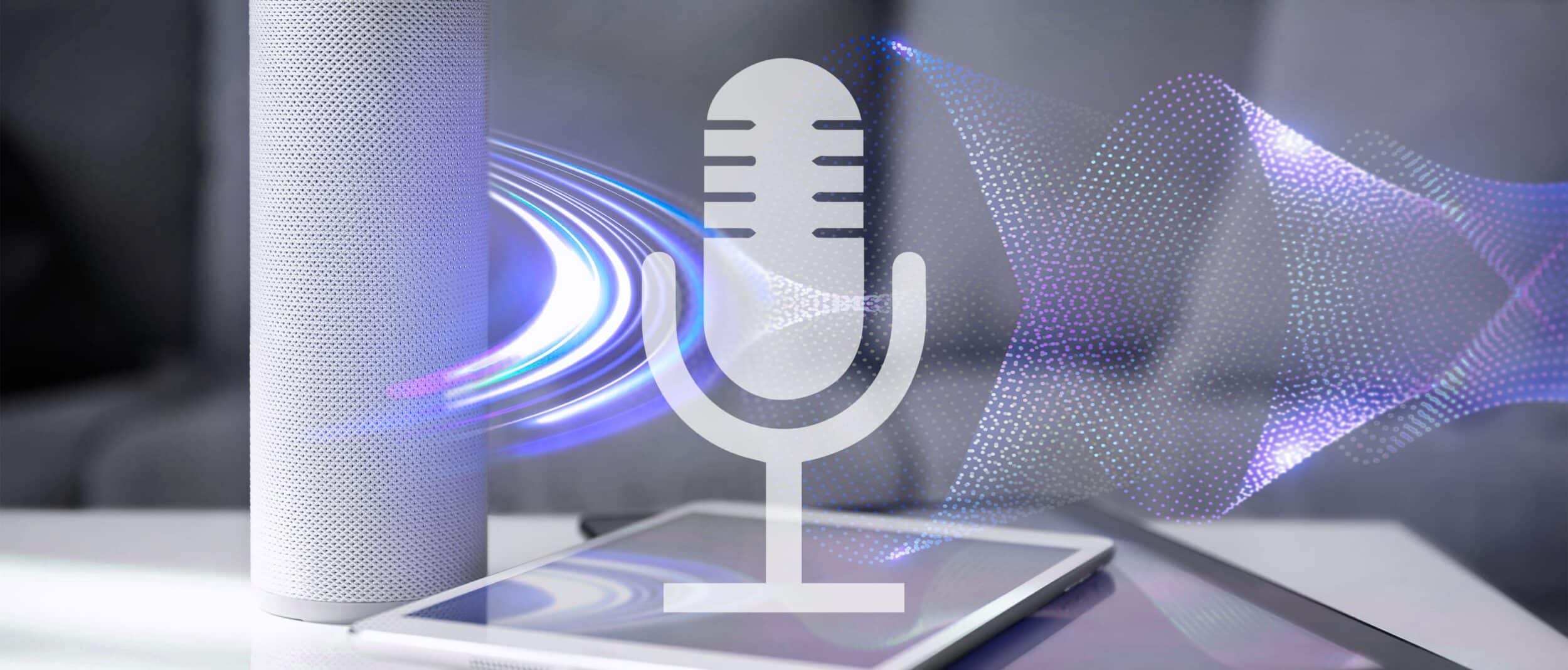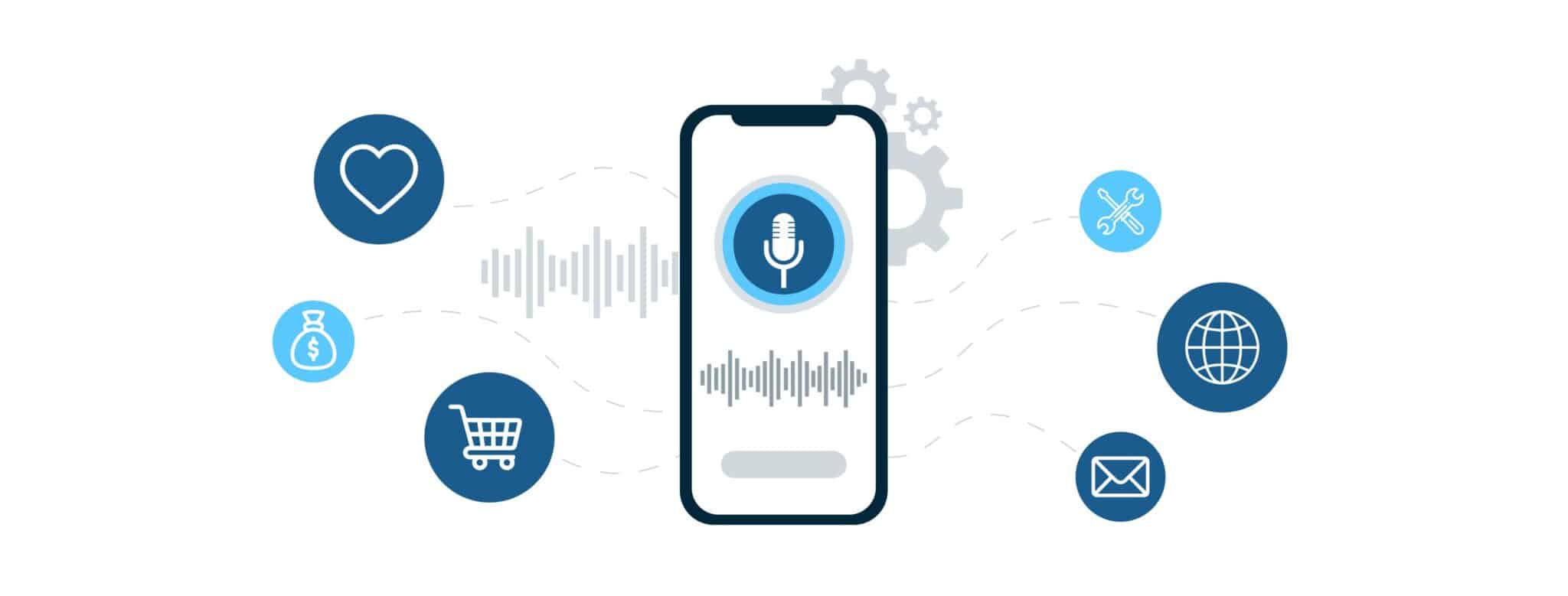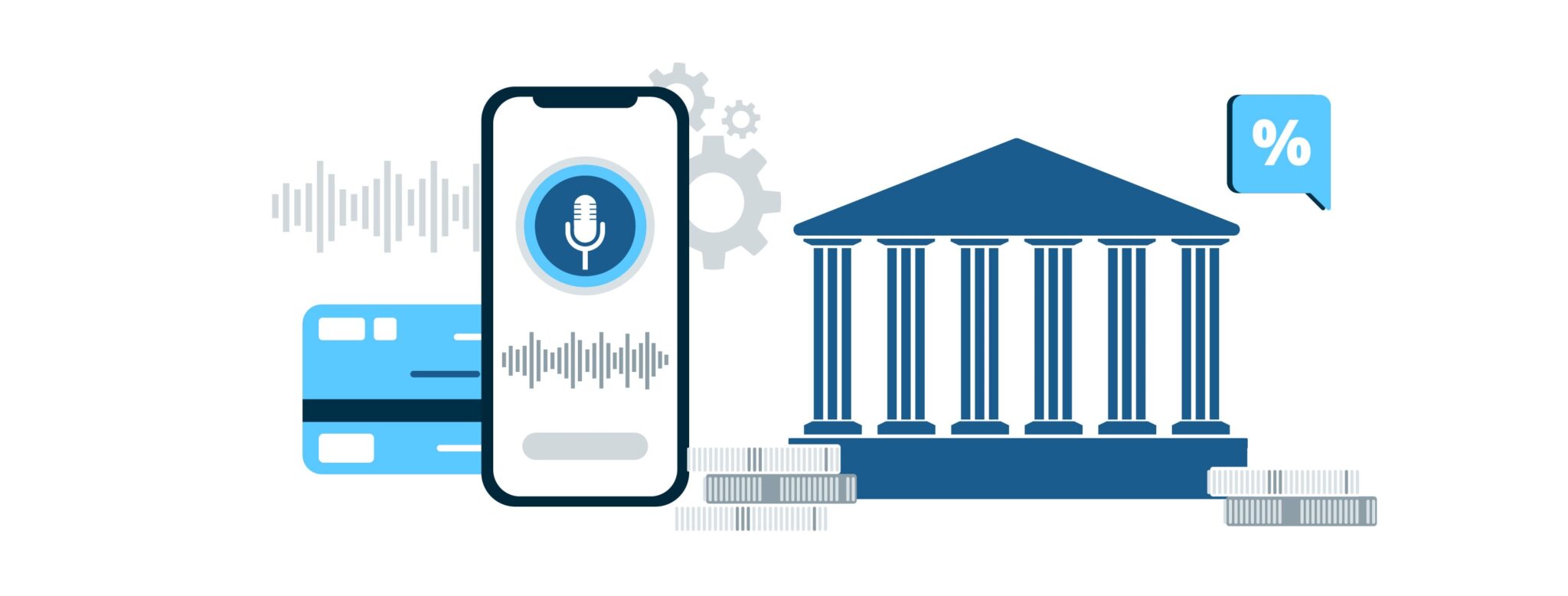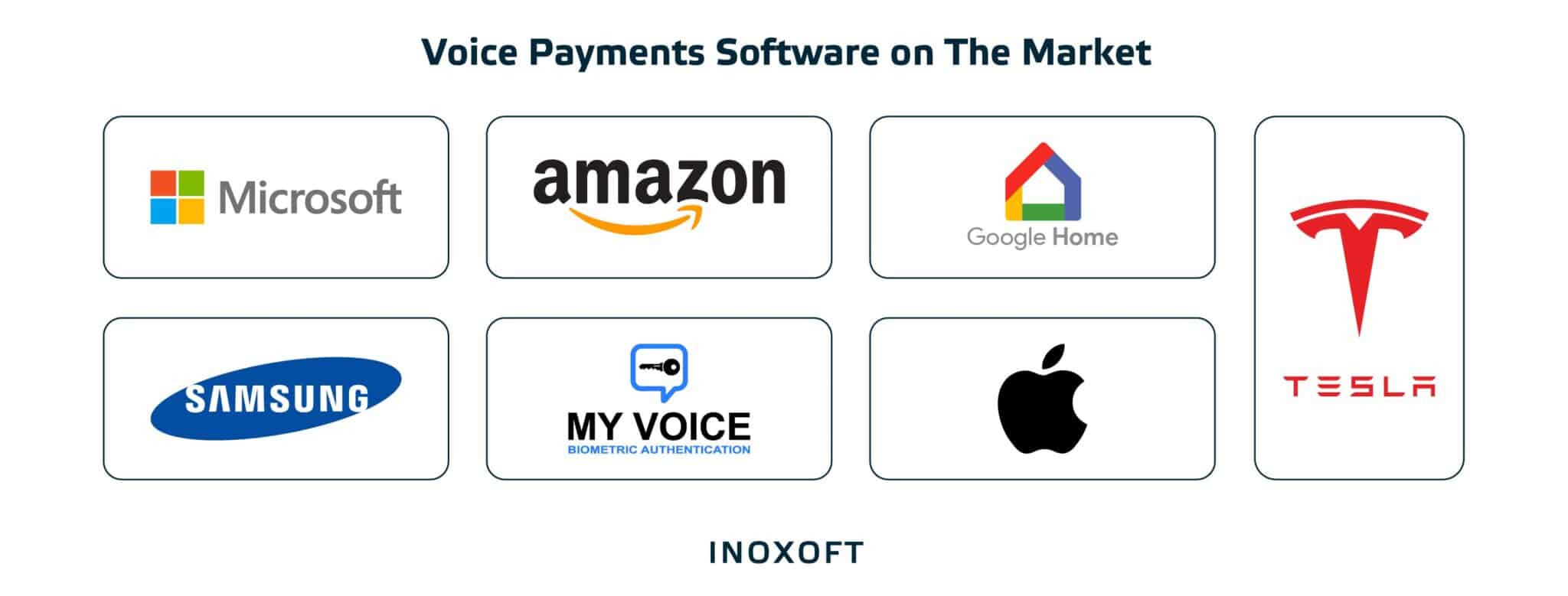The growing popularity of voice assistants such as Amazon Alexa and Google Assistant shows that the use of speech payments in banking is gaining ground. It's a breakthrough innovation in the banking sector that offers a seamless and futuristic payment experience. According to Yahoo Finance, the global market size of voice biometrics will grow to $3.9 billion by 2026, at a CAGR of 22.8%.
The question remaining is how voice payment technology works, how many people use it, and whether it is a revolution in banking with a promising future of voice payments.
Join us as we uncover the world of voice payments in banking and showcase the 7 best software solutions available to leverage this transformative trend. Stay ahead of the curve and explore the exciting possibilities that software for voice payment brings to the financial landscape.
- The Era of Connected Customers
- How Do Voice Recognition Technology Change Banks?
- How Do Voice Payments Work?
- The Challenges for Voice Payments
- Security Concerns
- Privacy Issues
- Accuracy and Reliability
- User Education
- Integration
- Accessibility and Inclusivity
- Why voice payments?
- Ease of Use and Control
- More Mobile Banking
- Fraud Reduction
- Attractive New Technology
- Seamless Integration with Smart Devices
- Voice Payments Software on the Market
- Tesla
- Amazon
- Google Home
- Apple
- Samsung
- Microsoft
- My Voice
- What's to Consider in Voice Payment Technology Development?
- Authentication of real-time biometric voice
- Detection of live speech
- Performance of daily banking operations
- Tough Security Questions
- Our Experience in Voice-Activated Payments and Development Cases
- Final Thoughts
The Era of Connected Customers
Connected customers are continually linked to information flows and services via smartphones, wearable devices, and social networks. They need a just-in-time response from everything digital around them. At the same time, connected banking means better customer experience because of closer relations between customers and banks, higher trust, and openness.
Being connected is a mindset that makes banks reimagine their services and whether their input is enough for clients. In such a way, new services appear. The banking sector has begun to apply AI and uses voice technology to satisfy their clients’ needs, stand out, and follow a socially responsible way of serving. They work to provide top voice-assisted banking services, receive payments and help, support, and recommend. For instance, Australia actively contributes to digitizing the financial industry and wiring the country with technologies.
That’s why technology in the financial industry is the first and foremost helpful hand for clients. Obviously, in a client-oriented society, we make developments and improvements for clients. Banks going through technology changes will experience benefits, a good reputation, and more clients.
How Do Voice Recognition Technology Change Banks?
Voice recognition technology has revolutionized the way people interact with autonomous voice assistants. Beyond their commonly known functions, such as searching for quick facts, asking for directions, or conducting product and service searches, these assistants are now making their mark in the banking industry.
The World Economic Forum claims the drastic impact of AI and machine learning technologies on the financial sector, highlighting three critical changes in the industry: job cuts, job creation, and increased efficiency. They argue that by 2027, approximately 23% of jobs in China’s financial industry could be replaced by AI technologies.
The advancement of artificial intelligence and machine learning holds the potential to enhance the quality and provide more opportunities for voice payments. Within the financial sector, use cases of voice payments have emerged as a catalyst for change:
- Enhances customer experience by allowing natural language and voice commands for interactions, making banking more intuitive and convenient.
- Improves security through biometric authentication, analyzing various aspects of speech, such as frequency, pitch, and accent.
- Streamlines processes, automating transactions and inquiries while saving time for customers and employees.
- Saves costs through automated customer support and resource optimization, reducing the need for additional customer support staff.
According to Juniper, the voice commerce market reached an impressive $80 billion last year and transactions conducted through smart home devices are expected to surge to $164 billion by 2025. These remarkable forecasts highlight the substantial growth and potential of voice-based payments as more businesses and consumers embrace voice technology for convenient and secure transactions.
How Do Voice Payments Work?
Voice payment is a straightforward process that involves speaking to an AI-powered device and instructing it to make a payment. The spoken commands are processed by artificial intelligence and machine learning advancements, and by specifically natural language processing (NLP), which enables computers to comprehend human languages and respond accordingly.
Voice recognition engines convert spoken words into digital form, allowing AI-enhanced voice assistants like Alexa or Siri to interpret and execute commands. Through the combination of AI, ML, and NLP, voice payments have become a convenient and efficient way to conduct transactions using verbal instructions.
Here’s a brief overview of the voice based payment process:
- Step #1: The user initiates a voice command to their voice assistant to perform a specific financial transaction.
- Step #2: Voice assistant captures the user’s voice and converts it into text using voice recognition technology.
- Step #3: After the recognition, the voice assistant securely communicates with the user’s linked financial accounts, so that it’ll authorize the requested transaction.
- Step #4: The voice assistant confirms the details of the transaction with the user through voice prompts or visual displays.
- Step #5: Finally, after the transaction, the voice assistant provides confirmation of the payment, including transaction details and a digital receipt if needed.
The Challenges for Voice Payments
While voice payments hold great promise in terms of enhancing user experience and streamlining the payment process, it also presents a set of challenges that need to be addressed for widespread adoption and security. Here are some of the key challenges for voice payments:
Security Concerns
Security is the most significant challenge for voice based payments. Verifying the identity of the user and ensuring that unauthorized individuals cannot make transactions is crucial. The risk of someone imitating your voice or accessing your device without permission raises concerns. Developing robust authentication methods, such as multi-factor authentication and biometric recognition, is essential to mitigate these risks.
Privacy Issues
Voice enabled payments hold the collection of sensitive data, such as voice recordings and financial information. Protecting user’s privacy and their data is a top priority. Service providers need to have stringent data protection policies and ensure that users’ data is not mishandled or exploited.
Accuracy and Reliability
Voice recognition technology is still new. Misunderstandings can lead to incorrect transactions or failed payments. Ensuring the accuracy and reliability of voice recognition systems is a challenge, especially in diverse linguistic environments.
User Education
Some users may not be fully aware of how voice payments work or the associated risks. Educating users on the technology, its security features and best practices for safe usage is crucial to build trust and encourage adoption.
Integration
As voice payments are introduced across devices and platforms, ensuring seamless integration and interoperability is challenging. Users may find it frustrating if voice payments work on one platform but not on another. Developers need to work on universal standards to address this issue.
Accessibility and Inclusivity
Not all users may have the same level of accessibility to voice payment technology. Those with disabilities or limited access to technology may be excluded from the benefits of voice payments. Efforts should be made to ensure that voice payment solutions are inclusive and accessible to a wide range of users.
Why voice payments?
Voice payments is an attractive option for tech-savyy consumers and businesses. Here are some key reasons to use this:
Ease of Use and Control
Voice payments are user-friendly tool, offering a seamless and intuitive way to make transactions. Users can complete payments and access financial information with a simple voice command, eliminating the need to navigate through various menus or type in payment details.
More Mobile Banking
Voice payments can be accessed through smartphones and other portable devices. This mobility aligns with the increasingly digital and on-the-go nature of modern banking and commerce. Users can check account balances, transfer funds, or make payments from virtually anywhere, enhancing their ability to manage their finances while on the move.
Fraud Reduction
Voice payments have the potential to enhance security and reduce fraud when properly implemented. Biometric authentication methods (e.g. voice recognition) offer a robust way to verify the identity of users, and make unauthorized access almost impossible.
Attractive New Technology
Voice based payments is a cutting-edge technology that appeals to users who are eager to embrace innovative and convenient solutions. The integration of voice-activated virtual assistants and smart speakers into everyday life has created a sense of novelty and excitement around voice payments.
Seamless Integration with Smart Devices
The technology integrates with smart devices and the Internet of Things (IoT). Smart speakers like Amazon Echo and Google Home, as well as virtual assistants like Siri and Google Assistant, can facilitate voice payments for a wide range of services. This allows users to control various aspects of their smart homes and perform financial transactions using the same device.
Voice Payments Software on the Market
When it comes to voice-assisted banking services, several providers stand out for having the best voice-assisted banking services. Let’s take a closer look at some of the leading companies that use technologies for voice payment:
Tesla
Tesla is linking cars to a connected home with the help of data-over-voice technology. And why not link cars to bank accounts? In partnership with Alexa, Tesla is searching for voice technology solutions for Tesla models. With the help of Alexa smart systems, they will provide drivers of cars with the option to use voice assistants to pay for fuel at gas stations in the U.S. Since the transaction uses an Alexa pay account, drivers do not need to swipe their credit cards or log in.
Amazon
IoT technology and wearables make shopping and online payments impressively easy. Google voice assistant allows users to shop at nearby stores, Venmo allows peer-to-peer transfers, and Alexa can help with paying off credit card bills. Amazon users can ask their assistant how much bills cost and the difference in amount from previous statements.
By creating Alexa – a cloud-based voice service, Amazon made it possible for its users to add products to a wish list, re-order items, check their order status, and more convenient features only by giving a voice command.
During the conference, Money Amazon announced that people whose utility relates to the Paymentus Instant Payment Network (700 billers) will soon be able to receive notifications and know when their bills are due with the help of Alexa Assistant.
Amazon’s voice-based payment technology became valuable for banks as well. The ones that adopted this technology are:
- in 2016 – Capital One US
- in 2017 – National Australia Bank, American Express US, US Bank, USAA, Enrichment CU US, Ally Bank US
- in 2018 – Westpac Australia, HDFC Bank India
The banks allow voice commands for account inquiries, spending tracking reports, payments, financial news searches, and more.
Google Home
Xcel Energy developed Google Action to make bill payments easier. Users of Google Assistant-enabled devices can ask Google Action to show monthly due dates and balance information. Xcel provides 3 million homes with electricity. The question of saving energy is always relevant, and the company noticed the positive impact of using voice assistants in payments.
Voice command solutions allow users to stay aware of the amount of consumption with energy-saving tips. E Source reports that 60% of people said that they were interested in a utility app that uses voice-activated skills. 44% of people reported that time spent with smart speakers replaced time spent with radio and 35% reduced their time spent with smartphones. 59% of respondents would encourage their friends to use voice assistant technology.
Google Home provides their voice payments software for banks to offer account enquiries, financial news, advice, and payment initiation. The list includes:
- in 2017 – Starling Bank UK
- in 2018 – OCDC Singapore
Without a doubt, these banks have possibilities of account enquiries, financial news and advice, and payment initiation by your voice.
Apple
Siri is a voice payment assistant that sends payments between users or pays bills with the help of spoken commands. It enables users to make voice-based payments from their mobile devices to registered payees. Thus, Apple users can voice commands to launch Siri and then use it to initiate a money transfer to payees. And all of that without physically accessing the banking application.
Siri payments are made by matching the nickname of the payee registered in the system. The process of payment authentication uses a touch ID as a passcode. Such voice payments software for banks can be integrated into banks’ mobile device apps: among the ones that have already implemented Siri voice recognition are:
- in 2016 – PayPal US, Monzo
- in 2017 – ICICI India, OCBC Singapore, Barclays UK
- in 2018 – ING Australia, Bank of America US
Mostly, banks use Siri to perform voice remittance, account enquiries, and payments enhancing user experience and keeping up with the fintech trends.
Samsung
Bixby is an assistant, the key device of which is Samsung. Its main role is to enhance the user experience by working with the apps you like and helping you do your daily tasks. Among Bixby’s benefits, there are:
- Routines that are time and effort-saving
- Simpler “Quick Commands” option
- Connected life (voice requests management)
- More efficient work done
To add, Bixby is on the list of most used voice-activated banking assistants that have an option of voice-enabled payments. For example, it was integrated into banking
- in 2017 – KEB Hana Bank, Shinhan Bank, and Woori Bank These banks use Bixby in account enquiries, spending tracking, financial news, and voice payments
To add, Bixby is on the list of most used voice-activated banking assistants that have an option of voice-enabled payments. Examples of voice payment assistants in banking are KEB Hana Bank, Shinhan Bank, and Woori Bank which used Bixby in account enquiries, spending tracking, financial news, and voice payments.
Microsoft
Cortana was launched in 2014 as a virtual assistant for Windows phone users. According to BBC News, “Microsoft has made a sensible decision to double down on Cortana as a platform to aid productivity gains, closely tied to its business-centric tools and services. Increasingly Cortana will become deeply integrated into specific Microsoft platforms, rather than being a generic voice assistant designed to be all things to all people.
My Voice
My Voice in-car assistant – a startup that originates in the UK and offers a variety of features, including machine learning, speaker identification, sentiment analysis and emotion detection. All these features are specifically used to activate advanced voice commands.
Among the solutions the company proposes is to perform voice payments from your car. The transactions made while driving are secure, so it’s convenient for people to resolve their financial issues on the spot while driving a car. With the ability to unlock one’s voice during the drive, My Voice can become a valuable asset and a convenient tool for paying bills. But, we’ll see that soon.
What’s to Consider in Voice Payment Technology Development?
Voice payment technology can be set up as easily as any of your online wallets. The voice payment option requires your device to be linked to a credit/debit card and all the bank details provided. If you set up your account correctly, you can give your smartphone voice commands to pay anywhere.
It’s great that in a voice payment system, you don’t have to open up the app to make payments. After you have made a command, the following steps will occur:
- Your payment app will open, greet you, and request a confirmation
- The payment authorization confirmation can be made with the help of filling in the password or biometrics scanning
- Afterwards, you will receive a confirmation by e-mail or in-app push notification that your costs have been withdrawn from your bank card
- The same payment process is initiated during a money transfer
However, you can ask your voice command payment app to perform payments, provide info on your account balance and remind you whether any monthly payments need to be done according to the schedule.
To develop this kind of voice payment banking app there is a need to consider:
Authentication of real-time biometric voice
Every voice has its speech characteristics: the accent, speed, intonation, timbre, and vocal cords’ physical characteristics. These factors must be analyzed so that the app can recognize the right ones.
Detection of live speech
The system has to be able to differentiate whether it is a person speaking live or recorded audio or a synthetical voice generated by a machine. Deciphering among humans, records, and machines makes the system able to authenticate its users correctly and secure from hazards and unwanted cyber fraud.
Performance of daily banking operations
Daily banking operations can be performed with the help of natural voice commands to:
- Log in to/log out of your bank account
- Initiate the balance check
- Go through previous transaction records
- Exchange or transfer money
- Confirm different purchases
Tough Security Questions
Voice recognition methods use biometrics data to identify who’s speaking with virtual assistants. Robotic assistants have undergone so many changes and updates that you won’t differentiate whether it’s a human or an AI talking to you. However, there are many privacy concerns around smart speakers that stop people from purchasing the devices.
All of the world’s biggest voice assistant providers – Amazon, Google, Apple, Microsoft, Facebook are listening to some utterances because machine learning won’t be efficient if there aren’t any improvements in conversations between humans and devices. However, some situations with real leakage of consumer secret information caused many doubts and indicated privacy as a key risk in voice assistant technology.
AI updates will facilitate the ability to understand accents, dialects, intonations, and even more. Fingertips are unique biometrics data, which is an important security measure. Approximately 48% of people have used biometrics to make payments. Security is a really big deal and new technologies always give way for hackers to invade personal accounts with fake biometric data.
That’s why violation of privacy is a serious problem, so the question is how banks are going to protect sensitive information when it is spoken, especially, in the public. According to a Biometric update, 2019 has witnessed the first victim of deepfake technology. Deepfake technology uses AI to counterfeit images, video, and audio.
Recently, Amazon’s Alexa security bug allowed access to voice history, which allowed hackers to attack and steal personal information. According to a Voice report by Microsoft and Bing, Google Assistant and Siri are used by 36% of people, and Amazon’s Alexa by 25%. So, security remains the leading cause of user distrust.
Our Experience in Voice-Activated Payments and Development Cases
Inoxoft has expertise in providing Banking Software Development Solutions that are up-to-date, user-friendly, and implemented cutting-edge features such as voice payment technology and others. Also, we have experience in creating a voice recognition web and mobile cloud-based solution for AI systems. Although it was not exactly about banking, the platform’s voice recognition features were carried out by our top software experts in AI/ML and NLP.
Thus, Inoxoft’s team managed to increase the accuracy of voice analysis, protect confidential information, store valid records in the cloud, and build a convenient web platform with consistent and intuitive UI/UX. If you need a solution based on voice-activated payments that require building an app powered by artificial intelligence, machine learning, and natural language processing that is also secure and within such security standards as GDPR and PCI DSS, give it a try and contact us!
Final Thoughts
Voice payment technology is poised to revolutionize the banking industry with its convenience and accessibility. This article highlighted 7 top software for voice payment in banking, showcasing their features and benefits. While the technology shows great promise, trust and security remain essential considerations. Companies are actively addressing security concerns and implementing measures to ensure the safety of voice payments.
Frequently Asked Questions
How do voice payments affect banks?
Voice payments revolutionize the banking industry, making interactions more intuitive and user-friendly, while also adding an extra layer of security through biometric authentication. The data generated by voice payments can be analyzed to gain insights into customer behavior and preferences. Implementing voice payments can also optimize resources and potentially reduce costs for banks.
How do voice payments work?
By utilizing voice recognition technology and artificial intelligence. When a user voices a request, the device's voice recognition system captures the spoken words and converts them into text. The text is then processed by the device's artificial intelligence algorithms, which interpret the command and perform the necessary actions. Additionally, secure authentication methods, such as biometric voice recognition or PIN verification, ensure the user's identity and protect against unauthorized access.
What are the pros and cons of voice payments for banking?
Voice payments software for banks enhances customer experience, improves security through biometric authentication, streamlines processes, and saves costs through automated customer support. Nevertheless, there are also some disadvantages related to the privacy concerns, accuracy and misinterpretation, and technical limitations.
Discover more in our article Role of Biometric Authentication in Mobile Banking App Security: Benefits, Features, Risks
What is the best voice payments software?
Some top contenders in the market include Amazon, Google Home, Apple, Samsung, Tesla, Microsoft, and My Voice. Explore and compare the features, compatibility, and security measures offered by each software to determine the best fit for your needs.
Do I need to implement voice payments technology?
Embracing voice payments can demonstrate your commitment to adopting emerging technologies and providing a modern and innovative customer experience, which can help build trust and loyalty among tech-savvy customers. Nevertheless, the decision to implement voice payments technology should be based on your business needs and customer preferences.








![Voice Payment Technology in Banking [Top 7 Software Examples] | Inoxoft](https://inoxoft.com/wp-content/uploads/2023/06/4@3x-80-1-scaled.jpg)
![Voice Payment Technology in Banking [Top 7 Software Examples] | Inoxoft](https://inoxoft.com/wp-content/uploads/2023/06/5@3x-80-1-scaled.jpg)



